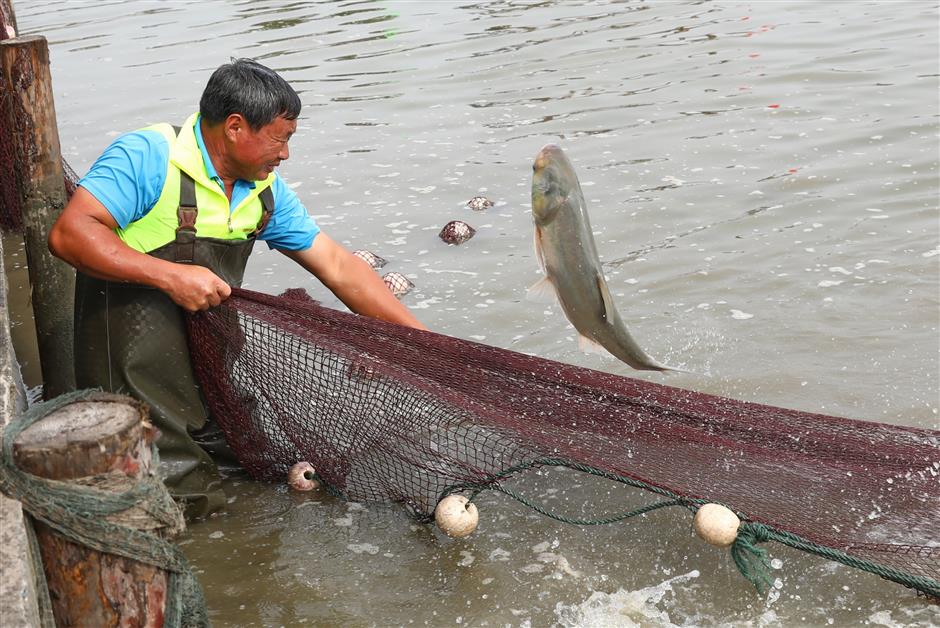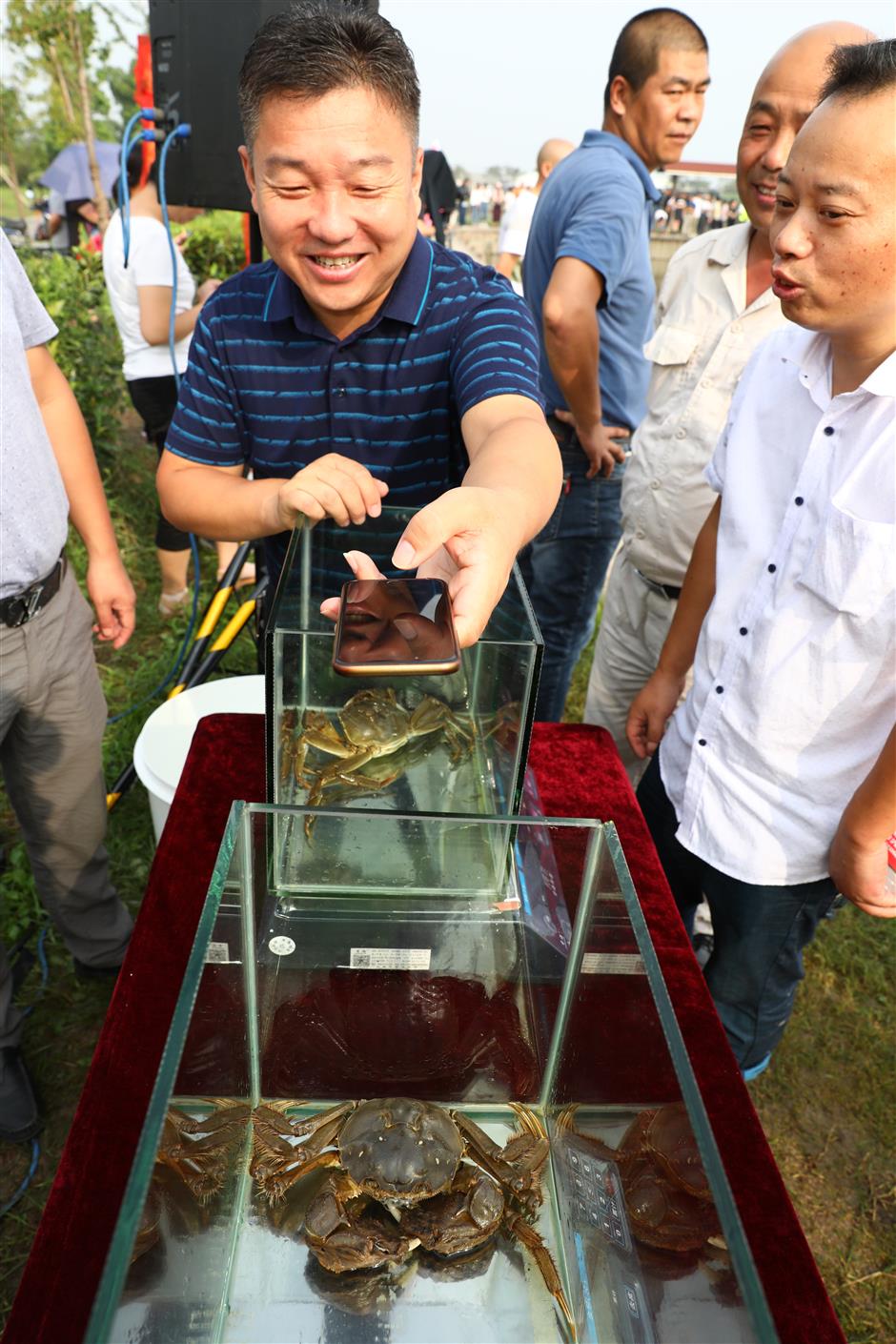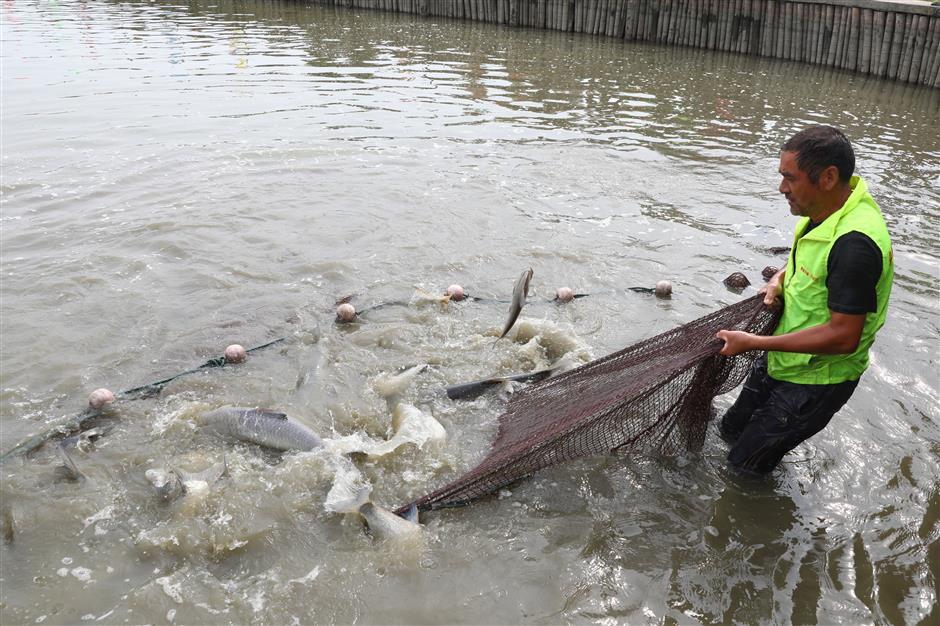Luojing farmers celebrate crab, fish harvest

A local fisherman nets black carp, whitefish and bream at a pond in Luojing Town of Baoshan District on Sunday.
Fishing started on Sunday on locally produced hairy crabs and fishes along with celebrations to mark China's first Farmers' Harvest Festival.
Villagers from Luojing Town, the city's major agricultural town in the northern district of Baoshan, began catching the town's prized Yangtze River hairy crabs from ponds and rice fields.
The crab meat is described as being "sweeter and tighter" to compete with those from the famed Yangcheng Lake in Jiangsu Province and elsewhere.
Hundreds local farmers jumped into ponds and rivers to fish for crabs in traditional ways with their hands and bamboo baskets. While fisherman netted the first batch of local fishes, including black carp, whitefish and bream, other villagers performed dancing and singing on the riverside as a ceremony to wish a harvest.

A villager with Luojing Town of Baoshan District takes pictures of the biggest male crab in the first batch to be harvested in the town which weighs 440 grams. The "queen crab" weighs 360 grams.
"A great harvest is expected on locally produced hairy crabs this year due to the ideal temperature and weather condition," said Yang Xin, director of the township government.
The local Luojing crabs are known for their bigger size, longer legs, tighter meat and rich roe as well as a slight naturally sweet flavor.
Yangtze River hairy crabs differ from those found in lakes and other rivers, according to the town, and they grow within the city's tap water source conservation at the mouth of Yangtze. The crabs spawn there every October and villagers catch the big baby crabs to raise them in ponds and rice fields.
It usually takes two years, twice as long as for other hairy crabs, for them to fully grow and be entered into the market. Yangtze River crabs are fed with fresh snails, weeds, corn, fish and beans.

Local fishermen with Luojing Town in Baoshan District begin harvesting fishes on Sunday.
By raising the crabs in rice fields, their excrement provides ideal fertilizer for the rice, while weeds from the fields offer food for the crabs. Farmers cannot use any chemical fertilizer because doing so would kill the crabs.
A crab fishing competition was also held among villagers and tourists to celebrate the Farmers' Harvest Festival.
The biggest male crab in the first batch to be harvested weighed 440 grams, while the "queen crab" weighed 360 grams.
The crab fishing competition and harvest celebration are part of the town’s efforts to develop tourism to attract downtown residents. The town wants to bring in visitors to enjoy its farmland scenery, taste and even catch the hairy crabs and witness how much of the city’s agricultural goods are produced in the town, said Yang.

A local fisherman nets black carp, whitefish and bream at a pond in Luojing Town of Baoshan District on Sunday.















